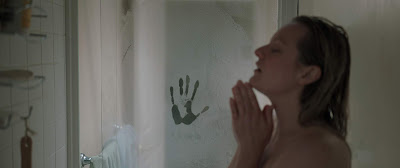The thing about doomsday is that it's always the end of somebody's world. "Eschatology" is a big word for a commonplace experience that comes for everyone eventually. As I write this in the dwindling months of 2020, huddled away in my house like I'm taking refuge from a zombie apocalypse during a plague year that is this generation's great calamity, I've been feeling that old millennial unease settle into my bones. The world really does feel like it's winding down, like the people I know are the last generations of humankind before pestilence and climate change wipe the world clean with fire and hurricanes and Covid-19, to say nothing of the other man-made ills that afflict the planet and the body politic. As always, the horror movies of the present moment reflect and interpret this reality, presenting apocalypses both small and personal and cosmic, with a range of flavors in between.
One such film is Starfish (2018, directed by A. T. White). It plays like an indie drama gone slumming in genre-ville, but it circles around the end of the world throughout its running time, embracing the end in terms that are personal, cosmic, and meta-cinematic by turns. It provides red meat and monsters for the horror crowd, but it's wrapped its narrative in layers of grief, regret, and redemption. It's an ambitious film for a production of such modest means, so it can be forgiven if it loses its way in the end.































